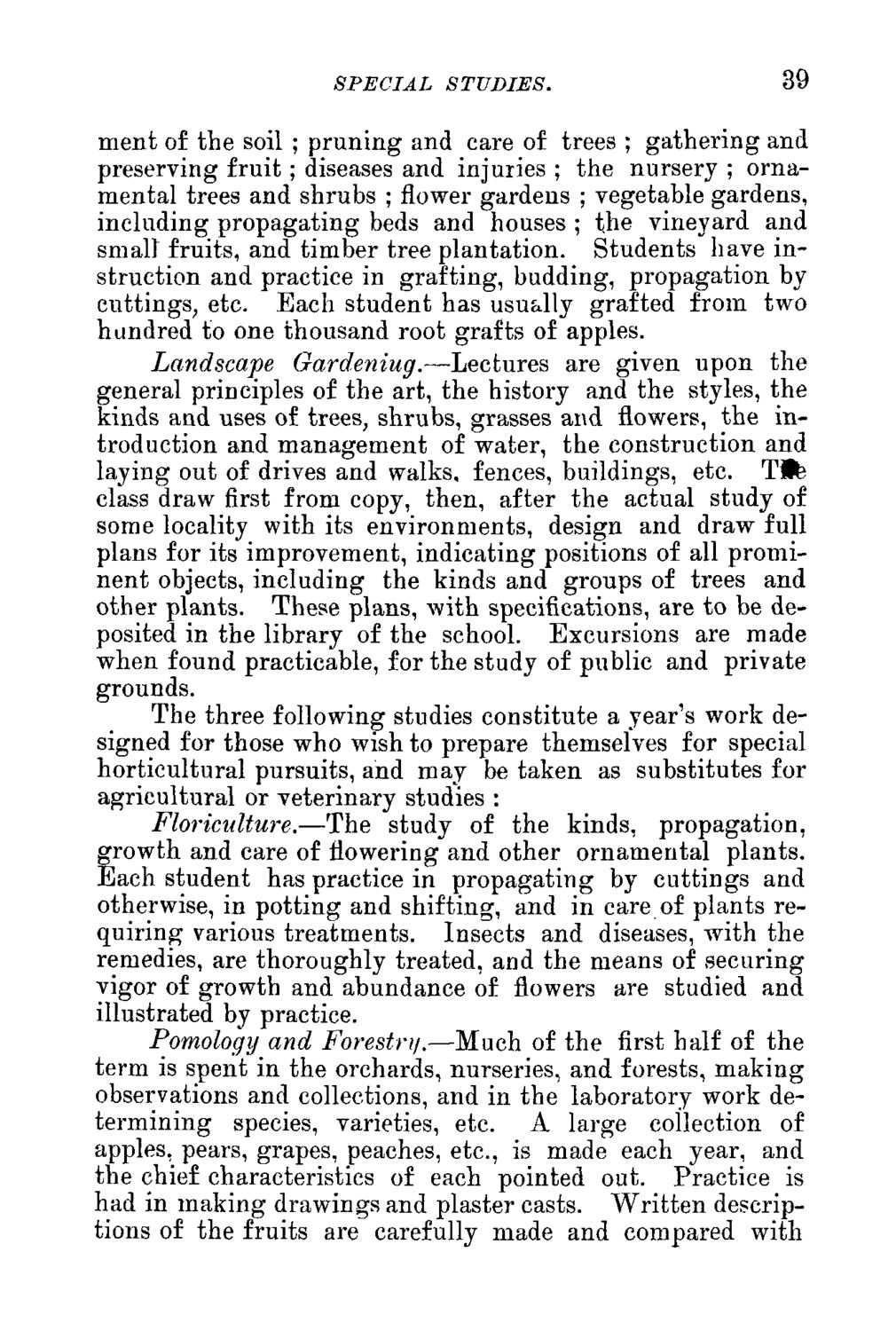| |
| |
Caption: Course Catalog - 1888-1889
This is a reduced-resolution page image for fast online browsing.

EXTRACTED TEXT FROM PAGE:
SPECIAL STUDIES. 39 ment of the soil ; pruning and care of trees ; gathering and preserving fruit; diseases and injuries ; the nursery ; ornamental trees and shrubs ;flowergardens ; vegetable gardens, including propagating beds and houses ; the vineyard and small fruits, and timber tree plantation. Students have instruction and practice in grafting, budding, propagation by cuttings, etc. Each student has usually grafted from two hundred to one thousand root grafts of apples. Landscape Gardeniug.—Lectures are given upon the general principles of the art, the history and the styles, the kinds and uses of trees, shrubs, grasses and flowers, the introduction and management of water, the construction and laying out of drives and walks, fences, buildings, etc. Tife class draw first from copy, then, after the actual study of some locality with its environments, design and draw full plans for its improvement, indicating positions of all prominent objects, including the kinds and groups of trees and other plants. These plans, with specifications, are to be deposited in the library of the school. Excursions are made when found practicable, for the study of public and private grounds. The three following studies constitute a year's work designed for those who wish to prepare themselves for special horticultural pursuits, and may be taken as substitutes for agricultural or veterinary studies : Floriculture.—The study of the kinds, propagation, growth and care of flowering and other ornamental plants. Each student has practice in propagating by cuttings and otherwise, in potting and shifting, and in care of plants requiring various treatments. Insects and diseases, with the remedies, are thoroughly treated, and the means of securing vigor of growth and abundance of flowers are studied and illustrated by practice. Pomology and Forestry.—Much of the first half of the term is spent in the orchards, nurseries, and forests, making observations and collections, and in the laboratory work determining species, varieties, etc. A large collection of apples, pears, grapes, peaches, etc., is made each year, and the chief characteristics of each pointed out. Practice is had in making drawings and plaster casts. Written descriptions of the fruits are carefully made and compared with
| |